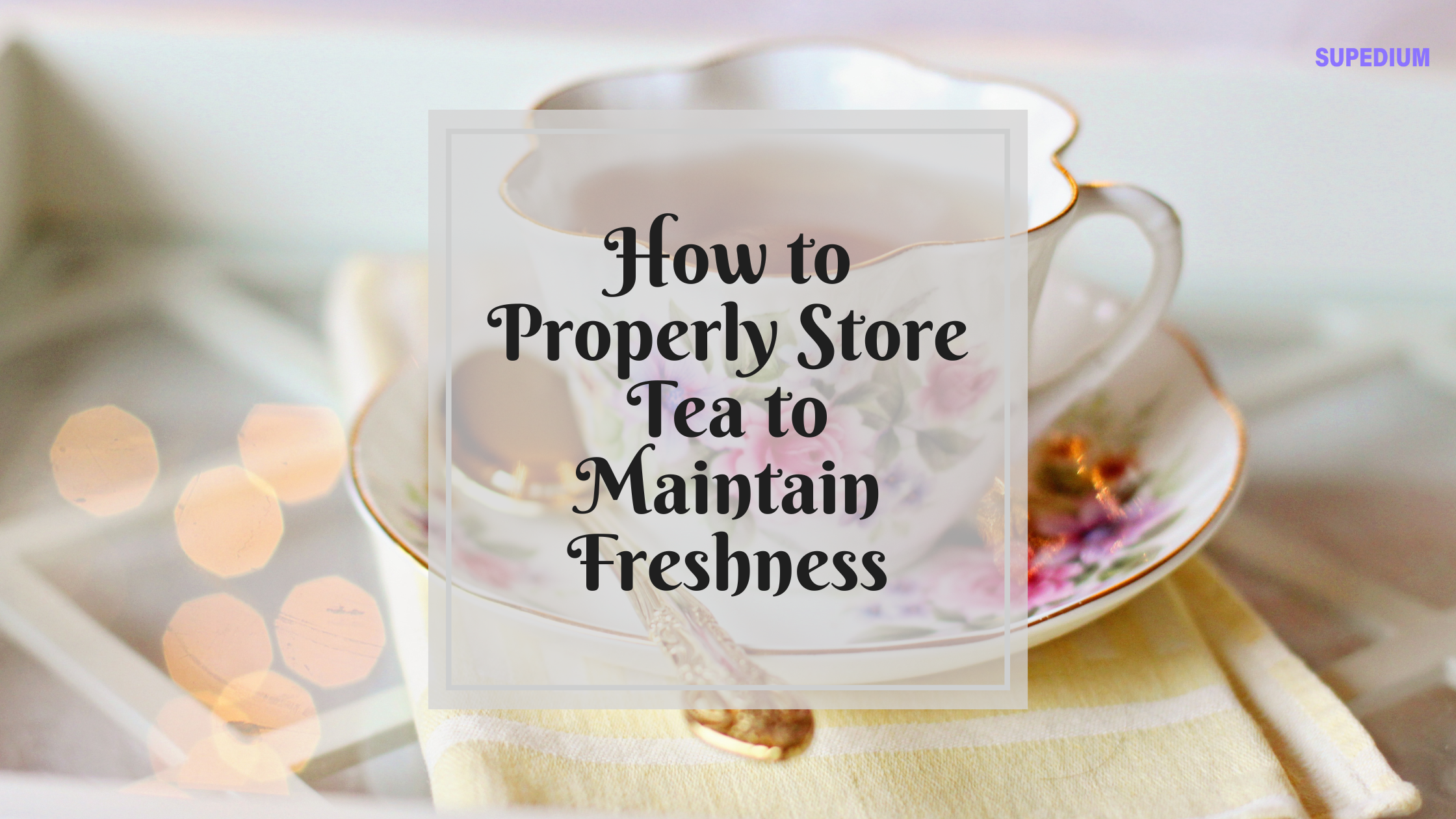Table of Contents
![]()
Tea is a beloved beverage enjoyed by millions around the world, with a wide range of varieties offering unique flavors and aromas. To ensure that your tea retains its freshness and optimal quality, proper storage is essential. This article provides a detailed guide on how to store tea effectively, preserving its flavor, aroma, and health benefits.
Understanding Tea Varieties and Their Storage Needs
Types of Tea
Tea comes in several varieties, each with specific storage requirements:
- Green Tea: Known for its delicate flavors and health benefits, green tea is sensitive to light, air, and moisture. It typically has a shorter shelf life compared to other teas.
- Black Tea: This tea is more robust and oxidized, making it less sensitive to storage conditions but still requiring proper care to maintain its full flavor.
- Oolong Tea: With characteristics between green and black tea, oolong tea needs careful storage to preserve its unique taste.
- White Tea: This tea is the least processed and has a subtle flavor that can be easily affected by poor storage conditions.
- Herbal Teas: Often containing dried herbs and fruits, herbal teas have varying shelf lives and can be affected by moisture and light.
How Each Type Affects Storage
Each tea type’s sensitivity to environmental factors influences its storage needs. For example, green tea’s delicate nature means it is prone to faster degradation, while black tea’s robustness allows for more flexibility.
Essential Factors for Storing Tea
Light
Exposure to light, especially ultraviolet (UV) rays, can degrade tea’s quality by causing oxidation. To avoid this, tea should be stored in opaque containers or in dark places.
Air
Air exposure accelerates oxidation, leading to stale or flat flavors. Tea should be stored in airtight containers to minimize contact with air and preserve its freshness.
Moisture
Moisture is a significant enemy of tea as it can cause mold and degrade the tea’s quality. Tea should be kept in a dry environment with low humidity levels to prevent moisture absorption.
Temperature
Tea should be stored in a cool, consistent temperature. Extreme temperature fluctuations or heat can adversely affect the tea’s flavor and aroma. The ideal storage temperature is between 60-70°F (15-21°C).
Storage Containers
Types of Containers
- Airtight Tins: These are ideal for keeping out air and moisture. They are a popular choice for tea storage.
- Glass Jars: When properly sealed, glass jars can be effective, though they are less ideal if exposed to light.
- Ceramic Containers: These offer excellent protection from light and can maintain a stable environment for tea.
- Plastic Bags and Containers: While convenient, they are generally less effective at maintaining airtight conditions and can absorb odors.
Choosing the Right Container
When selecting a container, consider factors such as material and seal quality. Airtight seals are crucial, and materials that do not impart odors are preferable. Avoid containers that are not airtight or those that might influence the tea’s flavor.
Avoiding Common Storage Containers
Containers that are not airtight or those made of materials that can impart unwanted odors should be avoided. This includes some plastic containers and older containers that may have absorbed previous contents’ odors.
Proper Storage Practices
Storing in a Cool, Dark Place
Tea should be kept in a cool, dark area away from heat sources such as stoves and direct sunlight. Recommended storage locations include pantries or cupboards where temperature and light conditions are stable.
Managing Bulk Tea
For those who purchase tea in bulk, it is best to divide it into smaller portions and seal them in airtight containers. This reduces the frequency of exposure to air and moisture each time the container is opened.
Handling and Handling Tips
Always use clean, dry utensils when handling tea to avoid introducing moisture or contaminants. Avoid transferring tea to different containers unnecessarily.
Special Considerations
Storing Flavored or Scented Teas
Flavored and scented teas are prone to flavor contamination from other strong-smelling items. Store these teas in separate, well-sealed containers to preserve their unique aromas.
Tea Bags vs. Loose Leaf Tea
Tea bags are generally less susceptible to moisture and air compared to loose leaf tea due to their packaging. However, loose leaf tea often provides a richer flavor and may require more careful storage practices to maintain its quality.
Signs of Stale or Spoiled Tea
Changes in Aroma and Flavor
Stale tea may have a diminished aroma or a flat, off-taste. If the tea lacks its original fragrance or flavor profile, it may be past its prime.
Appearance and Texture Changes
Discoloration, loss of texture, or the presence of mold are clear indicators that tea has gone bad. Fresh tea should maintain its intended appearance and texture.
How to Determine if Tea is Still Good
If in doubt, perform a sniff test or a taste test. Fresh tea should have a vibrant aroma and flavor. If these are missing or unpleasant, it is best to discard the tea.
Conclusion
Proper storage is crucial for maintaining the freshness and quality of tea. By understanding the specific needs of different tea types and adhering to best practices for storage, you can ensure that your tea remains flavorful and aromatic for as long as possible. Follow these guidelines to enjoy the best possible tea experience and make the most of each cup.
Share This





Be the first to comment